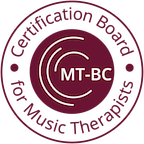Understanding Health Attachment
Aside from the adorable facial expressions of this sweet baby, we can see that this infant is highly tuned in to the caregiver. Researchers have found that there are three essential factors in developing healthy attachment between caregiver and child.
- Attunement –
In therapy, this term is used to describe the process of two people becoming emotionally connected. It involves being connected on an emotional level, such as understanding each other’s feelings and responses. This type of connection allows for a deeper understanding of a person’s needs, thoughts, and emotions.
- Synchronicity –
Understanding the concept of synchronicity between a child and a caregiver is important for providing effective guidance and support. Synchronicity can be seen as both a connection and an awareness of each other’s feelings and thoughts. It is this mutual understanding between the child and caregiver that creates a strong bond as it allows both parties to show empathy, compassion, love, and support. Furthermore, it also serves as an aid in understanding the behavior patterns of the child and how to best respond to them.
Synchronicity between a child and caregiver is especially beneficial during times of stress or change. By being able to identify the emotions of the other person in a given situation, the caregiver can offer comfort by providing reassurance that their feelings are recognized and understood. In turn, this can help strengthen the relationship between them as well as a foster trust by creating safety for both parties to open up.
- Interactive Repair –
Since no caregiver is perfect, the concept of interactive repair is vital for children to learn in order to develop healthy interpersonal skills as humans. Interactive repair is when a child has come to learn a caregiver to be trusting and consistent. However, when that caregiver makes a mistake, the child can feel disappointed and let down but learn that the caregiver can circle back and repair the dysregulation in the relationship. This communicates to the child that in a healthy relationship, your trusted and consistent people can be imperfect and let you down but still come back to repair and strengthen the relationship.
Last week I arrived at a client’s home for my first official session. During intake, I learned about this little guy’s story and struggles and knew that developing relationships with therapists in the home had been unsuccessful in the past. Mother and I decided to allow him the ability to roam the house while we engaged with instruments, creating a space for parallel play. Immediately this kiddo’s interest was piqued by the sound of the guitar and large gathering drum. To both of our surprise, he took several moments to engage with the drum next to his mother. After each short engagement, he would immediately fling back into his mother’s lap and seek comfort and reassurance.
Music Therapy created a focus for engagement and the opportunity for this mother-son to engage in the powerful relational concept of attunement and synchronicity through right-brain to-right-brain interaction.
What is right-brain-to-right-brain interaction?
Right-brain-to-right-brain interaction is a powerful tool for connecting children with their caregivers. This type of connection takes place when the two parties are able to exist in an open, non-judgmental space where feelings and emotions can be openly expressed.
Right-brain-to-right-brain interaction requires that both the caregiver and the child be present in the moment and engaged in a mutual exchange. This means that both parties are creating an environment that allows for openness and understanding by listening deeply, expressing empathy, and being fully attentive. The goal is for both the caregiver and the child to develop an understanding of each other’s needs, feelings, and perspectives so that they can respond appropriately.
This type of interaction has been shown to have numerous positive effects on children’s development including increased self-esteem, improved communication skills, enhanced problem-solving abilities, better impulse control, heightened ability to relate emotionally with others, as well as a decrease in behavioral issues. In essence, right-brain-to-right-brain interaction helps create strong connections between children and their caregivers which serve as the foundation for healthy relationships throughout life.
How can Music therapy help?
Music therapy is an incredibly effective way to use the concept of right-brain-to-right-brain interaction to aid in a child’s development. Music therapists employ techniques such as songwriting and playing instruments together, which provide a space for both the therapist and the child to engage with each other on an emotional level.
Through this type of interaction, music therapists can help children open up more and share their feelings in a safe, non-judgmental environment. They also create opportunities for children to express themselves through creativity by composing songs together or incorporating storytelling into their sessions. This can then give them a sense of control over their emotions and allow them to feel seen and understood.
Music Therapy is also an excellent space for the caregiver and child to engage in attunement, synchronicity, and interactive repair techniques. In these sessions, the therapist would facilitate meaningful interactions between parent-child to develop trust, bonding, and healthy attachment.
Additionally, music therapists can use right-brain to right-brain strategies to help children focus on tasks or redirect their attention away from symptoms in order to relax. By creating musical activities that require mental energy and concentration, they can help kids practice regulating their emotional states in order to manage stress more effectively.
Ultimately, the goal of employing these strategies is for children to gain insight into how they relate with others emotionally so that they can develop healthy relationships in the future. Music therapy provides an inviting atmosphere for exploring these concepts and working towards progress within their individual struggles.



